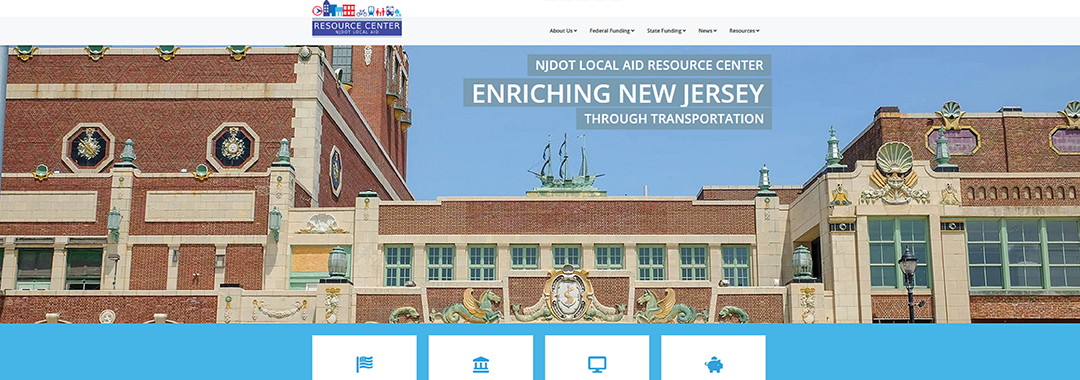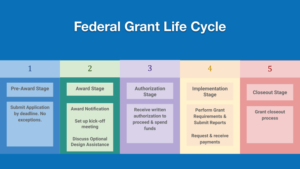When cities, counties, and other local public agencies (LPAs) use Federal funds for transportation projects, they must follow all of the applicable Federal laws and regulations attached to the Federal aid. NJDOT, like other state departments of transportation (DOTs), oversees the LPA program and works with agencies to help them use Federal-aid effectively. During Round 2 of the Every Day Counts Program (EDC-2), FHWA promoted innovative strategies for overcoming common challenges with Locally Administered Federal-Aid Projects including practices for enabling “Consultant Services Flexibilities” on local programs and projects.
To aid its LPAs in the delivery of its non-traditional projects programs, the NJDOT Division of Local Aid and Economic Development (Local Aid) established the Local Aid Design Assistance Program. The Design Assistance Program seeks to support LPAs that have received federal grants through the Safe Routes to School and Transportation Alternatives Set-Aside (TA Set-Aside) programs. The Program provides a pool of pre-qualified engineering design consultants to assist LPAs with plans, specifications and estimates (PS&Es) with the goal of seeing more infrastructure projects implemented. Laine Rankin, Director of Local Aid and Economic Development, and Julie Seaman, Project Management Specialist, described the program.
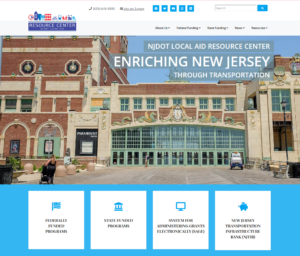
The NJDOT Local Aid Resource Center website provides links to information on the Design Assistance Program
What are some of the most common challenges local agencies face with the project design process?
LPAs often face lack of staff, lack of funding, and staff turnover, all of which can limit their capacity to take on the federal grant process and can result in delays in infrastructure project planning and implementation. Because New Jersey is a home-rule state, the State has limited jurisdiction over county or local roads. Instead, the municipalities and counties are responsible for infrastructure improvements on their roads. The NJDOT Local Aid Office assists the municipalities in implementing these projects by administering the federal funding for them. Local Aid is ultimately responsible for the spending of these federal dollars.
Safe Routes and TA Set-Aside grant recipients face challenges in understanding and complying with requirements related to federal grant administration. In particular, the requirements of the Brooks Act, also known as Qualifications Based Selection, prove difficult to satisfy in project administration. The Brooks Act details federal requirements for the procurement of professional services of consultants, including:
- Issuing a request for proposal or RFP from consultants based on approved written procurement policies and procedures
- Solicitation, evaluation, ranking and selection of consultants
- Selecting a consultant based on qualifications and experience, not cost
- Negotiating a fair and reasonable cost and contract terms with selected consultant
- Monitoring the consultants’ work
- Evaluating the consultants’ performance
- Contract completion
How does the design assistance program work?
Most grant applications that Local Aid receives do not describe projects that are construction-ready. LPAs need assistance to complete designs, and develop engineering plans, specifications, and estimates required to see a project built.
Through the Design Assistance Program, NJDOT procures a pool of design consultants that LPAs can then choose to work with. Once NJDOT and the MPOs have chosen the projects that will be funded for a grant cycle, Local Aid develops a Request for Proposals (RFP) that lists the selected projects and scope for each grant. The NJDOT Office of Procurement solicits a pool of engineering firms that will be able to assist the grant recipients with their particular projects. The firms considered for the pool are typically familiar with requirements associated with developing a set of plans which are compliant to the NJDOT plan and AASHTO standards. Once the consultant pool has been approved by NJDOT management, a letter is sent to all of the grant recipients of that grant cycle informing them of the engineering firms available.
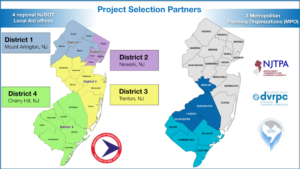
The NJDOT Local Aid Office partners with NJ’s three Metropolitan Planning Organizations in the TA Set-Aside project selection process
Funding for design assistance comes from the same line of federal funding as the SRTS grant and the TA Set-Aside grants. LPAs receive grant funds for the design program above the amount awarded for the project itself.
For how many years has the design assistance program been operating?
Although this is a pilot program, we initiated the process in April of 2014 and it took about a year and a half to get it up and running following meetings with FHWA, NJDOT Procurement, and the NJDOT Deputy Attorney General. Our office talked to peers in other states including Kentucky, New York, Missouri, among others to understand how other Local Aid offices were handling design assistance for grant recipients and the consultant solicitation process. Design assistance programs were developed for both the Safe Routes to School (SRTS) and the Transportation Alternatives Set-Aside (TA Set-Aside) programs. Design assistance first became available to grant recipients in the 2014 grant round and we solicit grant applications on a two-year cycle, or after a grant solicitation for that particular program has been completed.
How do the LPAs find out about the design assistance program?
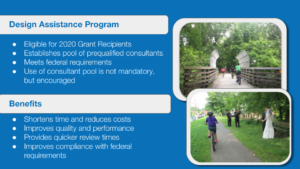
TA Set-Aside Grant Webinar explained the purpose and benefits of the Local Aid Design Assistance program
The design assistance program is introduced in our general training session for applicants that describes how to apply for a Safe Routes or TA Set-Aside grant. After the grant awards are announced, information about the program is included in the letter that we send to grant recipients, and a separate informational session is held with grant recipients to discuss the design assistance pool. All grant recipients are eligible to take part in the program; they do not apply for the program and there is no obligation to take part.
Can you say what percentage of grant recipients choose to use the program?
It has taken some time to publicize the program, but awareness among LPAs is growing. In 2016, 19 of 36 TA Set Aside grant recipients, and 12 of 17 SRTS grant recipients elected to use the program. Our 2018 pools are still open; to date, 13 of 25 TA Set Aside grant recipients and 13 of 18 SRTS grant recipients have shown interest in the program. We have approval from FHWA to keep the pool open for a year, with an option to extend up to two years. If an LPA proposes a TA Set-Aside project that involves some specialized work that the engineering firms could not respond to – such as architectural design, then the LPA will not be able to use the design assistance program.
Do NJDOT, the LPA, and the consultants work together through the design assistance process?
Yes. The project application is reviewed and a field meeting is typically scheduled with representatives of the LPA, the consultant engineering firm, the Local Aid regional office, and NJDOT environmental staff. The LPA, NJDOT, and the consultant then work together to develop the scope of work. The consultant prepares a fee proposal and Local Aid develops an independent cost estimate that is used to compare with the consultant’s proposal. NJDOT assists in negotiating the agreement between the LPA and the consultant but the LPA executes an agreement directly with the consultant. NJDOT authorizes federal-aid funds for the design, in excess of the project grant award. The LPA continues to work with the Local Aid District Office through the design process, and NJDOT conducts an environmental review as well. Before the project goes to construction, the plans and specs are submitted to the Local Aid District office for approval in order to ensure a biddable, buildable, project. The LPA pays the consultant directly and then requests reimbursement for the cost from NJDOT.
What benefits have you seen from the program?
In our experience, what may seem like a simple project, such as installing a sidewalk, can be very complicated. In many cases, particularly for Safe Routes projects, the design costs may exceed the construction costs. We provide design funds for LPAs that choose to procure an engineering firm, but the LPA must comply with the Brooks Act in their procurement process. Some LPAs choose to work with their municipal engineer, but the engineer must be qualified to do the work. Municipal engineers who are involved in the design of these projects are not allowed to also inspect the projects, and these inspection costs increase the overall project cost for the LPAs. For LPAs not using in-house engineering services, the design services procurement process is burdensome.
Through the Local Aid Design Assistance Program, we are distributing more federal funds and seeing more projects advancing than in the past. When we give a grant out, we want folks to build it. LPAs can develop more involved projects. The program results in better compliance with complex state and federal regulations and helps resolve typical engineering issues, such as right-of-way and utilities, that can affect project cost and schedule. LPAs are better prepared for the permitting process.
Do you see the program continuing into the future?
We will be continuing the program. There are always some tweaks to be made but the program is helping local agencies implement projects that improve health and safety throughout the State.
Resources
American Council of Engineering Companies (ACEC). (u.d.). The Brooks Act: Federal Government Selection of Architects and Engineers. Public Law 92-582, 92nd Congress, H.R. 12807, October 27, 1972. Legislation on Website. Retrieved from: https://www.acec.org/advocacy/qbs/brooks/
American Council of Engineering Companies (ACEC). (u.d.). The Brooks Act: How to use Qualifications Based Selection. Website. Retrieved from: https://www.acec.org/advocacy/qbs/brooks2/
FHWA. (u.d.). EDC-2 Innovations. Website. Retrieved from: https://www.fhwa.dot.gov/innovation/everydaycounts/edc-2.cfm
NJDOT. (2020). Applying for Federal Transportation Alternatives Set-Aside Program Funds Webinar TA Set-Aside Grant Webinar Session #2. Online Session. Retrieved from: https://www.youtube.com/watch?v=_mxjlb1Zyr0&feature=youtu.be
NJDOT. (2020). Transportation Alternatives Set-Aside Design Assistance Program. Presentation. Retrieved from: https://njdotlocalaidrc.com/perch/resources/taset-asidedesignassistanceprogramworkshop-2-28-2020jules-1.pdf

